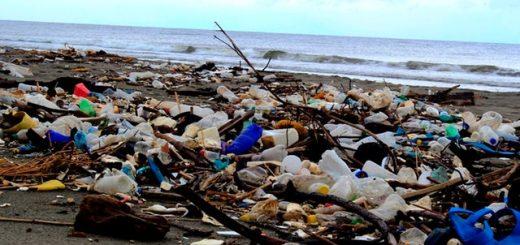America Doesn’t Care What Russia Objects To; The Superior Nation With the Superior People Only Care What THEY Want! (Note the Sarcasm!)
Comment: Think our media lies about Putin and Russian Military to get a weakened United States into WW3 killing American Christians in a massive holocaust just like the EU Christians are marked for death by Satanic U.S. Leaders. We should have an open discussion with Russian leaders where American people can see UNEDITED interviews. I do regard the U.S./EU media as Propaganda & Lies. Our media is Rockefeller/Rothschild/Vanguard/BlackRock Pro War Propaganda and BLACK Propaganda against foreign leaders.
U.S. Defense Policy Documents Integrate All Aspects of Strategy Against China and Russia
Oct. 28, 2022 (EIRNS)—For the first time, all the defense policy documents that were released yesterday, the National Defense Strategy (NDS), the Nuclear Posture Review (NPR) and the Missile Defense Review (MDR), were composed and released together. The development of the three documents together “led to substantive coherence, a more integrated and seamless approach to issues like deterrence and risk management, and it resulted in a very tight strategy to resources linkage,” said a senior defense official briefing reporters on background.
China:. With respect to China, the NDS “seeks to prevent the P.R.C.’s dominance of key regions while protecting the U.S. homeland and reinforcing a stable and open international system.” A key objective of the strategy “is to dissuade the P.R.C. from considering aggression as a viable means of advancing goals that threaten vital U.S. national interests.” The DOD supports “broader whole-of-government efforts to develop terms of interaction with the P.R.C. favorable to our interests and values while managing strategic competition and enabling the pursuit of cooperation on common challenges.”
The document characterizes China as the “most comprehensive and serious challenge to U.S. national security” because of “the P.R.C.’s coercive and increasingly aggressive endeavor to refashion the Indo-Pacific region and the international system to suit its interests and authoritarian preferences.” The document claims that “The P.R.C. seeks to undermine U.S. alliances and security partnerships in the Indo-Pacific region, leverage its growing capabilities, including its economic influence and the People’s Liberation Army’s growing strength and military footprint, to coerce its neighbors and threaten their interests.
“The P.R.C.’s increasingly provocative rhetoric and coercive activity towards Taiwan are destabilizing, risk miscalculation and threaten the peace and stability of the Taiwan Strait,” it claims. “This is part of a broader pattern of destabilizing and coercive behavior that stretches across the East China Sea, the South China Sea, and along the Line of Actual Control.
“The P.R.C. has expanded and modernized nearly every aspect of the PLA with a focus on offsetting U.S. military advantages,” the document complains. “The P.R.C. is therefore the pacing challenge for the Department.”
Russia: While focused on the P.R.C. as the “pacing challenge,” the NDS “also accounts for the acute threat posed by Russia, demonstrated most recently by Russia’s unprovoked further invasion of Ukraine” (this is the lie that the whole document hinges on respecting Russia). Therefore, “The Department will support robust deterrence of Russian aggression against vital U.S. national interests, including our treaty Allies.” The U.S. will work with NATO “and our partners to provide U.S. leadership, develop key enabling capabilities and deepen interoperability.”
Then the NDS gets even nastier. “Contemptuous of its neighbors’ independence, Russia’s government seeks to use force to impose border changes and to reimpose an imperial sphere of influence,” it says.
“Its extensive track record of territorial aggression includes the escalation of its brutal, unprovoked war against Ukraine. Although its leaders’ political and military actions intended to fracture NATO have backfired dramatically, the goal remains. Russia presents serious, continuing risks in key areas. These include nuclear threats to the homeland and U.S. Allies and partners; long-range cruise missile threats … and extensive gray zone campaigns targeted against democracies in particular.”
Nuclear Threat: The nuclear policy of the U.S., in effect, is to prevent war by threatening alleged aggressors if they start one. “U.S. nuclear weapons deter aggression, assure allies and partners, and allow us to achieve Presidential objectives if deterrence fails,” the Nuclear Posture Review (NPR) declares. However, “deterrence alone will not reduce nuclear dangers.” Therefore, “The United States will pursue a comprehensive and balanced approach that places renewed emphasis on arms control, nonproliferation, and risk reduction to strengthen stability, head off costly arms races and signal our desire to reduce the salience of nuclear weapons globally.”
Going along with this is a completely false statement about Russia’s alleged nuclear saber rattling in Ukraine, which the U.S. must respond to. “Russia’s leadership should have no doubt regarding the resolve of the United States to both resist nuclear coercion and act as a responsible nuclear power.”
The NPR adopts a series of steps toward what is said to be a safe and secure deterrent while supposedly reducing the role of nuclear weapons in deterrent strategy. Two of these steps are the following:
• Adopt a strategy and declaratory policy that maintains a very high bar for nuclear employment while assuring allies and partners and complicating adversary decision calculus.
• Adopt an integrated deterrence approach that works to leverage nuclear and non-nuclear capabilities to tailor deterrence under specific circumstances.
The declaratory policy of the U.S. is: “As long as nuclear weapons exist, the fundamental role of nuclear weapons is to deter nuclear attack on the United States, our allies and partners. The United States would only consider the use of nuclear weapons in extreme circumstances to defend the vital interests of the United States or its allies and partners.” The “extreme circumstances” and “vital interests” are not defined in the document. The U.S., it says further, won’t use or threaten to use nuclear weapons against states that are party to the Nuclear Non-Proliferation Treaty (NPT) and in compliance with their obligations thereto. For all other states, “there remains a narrow range of contingencies in which U.S. nuclear weapons may still play a role in deterring attacks that have strategic effect against the United States or its allies and partners.”
The NPR dispenses with no-first-use and sole-purpose policies by reporting that the reviewers “concluded that those approaches would result in an unacceptable level of risk in light of non-nuclear capabilities being developed and fielded by competitors that could inflict strategic-level damage” to the U.S. and its allies and partners. It claims that the U.S. retains the goal of moving toward sole-purpose declaration “and we will work with our allies and partners to identify concrete steps that would allow us to do so.”
Russia Moving Ahead with Vostok Oil Project in Arctic
Oct. 28, 2022 (EIRNS)—In his keynote at the Verona Eurasian Economic Forum in Baku, Azerbaijan on Oct. 27, Rosneft CEO Igor Sechin spoke about Russia’s mega Vostok Oil Project. The ambitious project will be a hub for the northern oil fields in the Krasnoyarsk and Yamalo-Nenets regions—13 in total—and encompass the infrastructure needed to take full advantage of the Northern Sea Route for Russia’s growing oil trade.
Sechin referenced the changed geopolitical situation. “Having made the strategic decision to ‘pivot to the East,’ Russia is consistently stepping up energy supplies to the Asia-Pacific region,” he said. Sechin continued that the demand for Russian oil will continue to grow from Southeast Asia, India, and China, and that the Vostok Oil Project will be able to match that demand. The Bukhta Sever port on the Arctic Ocean is also being bolstered as part of the project and will see increases in capacity, from 30 million tons of oil per year, with the goal being 100 million tons in the not-too-distant future.













